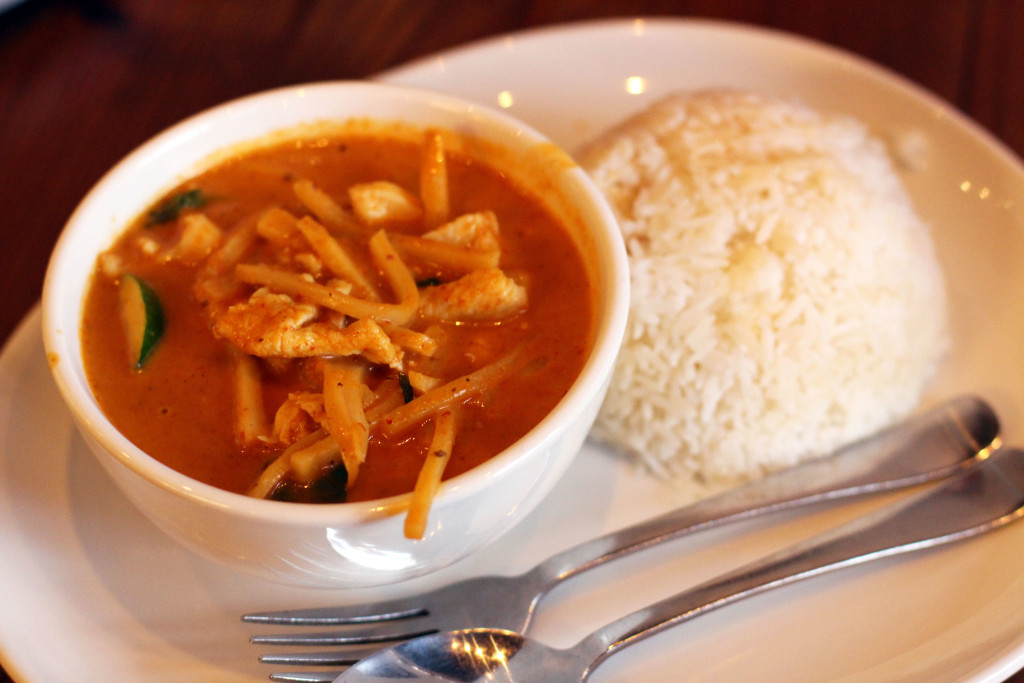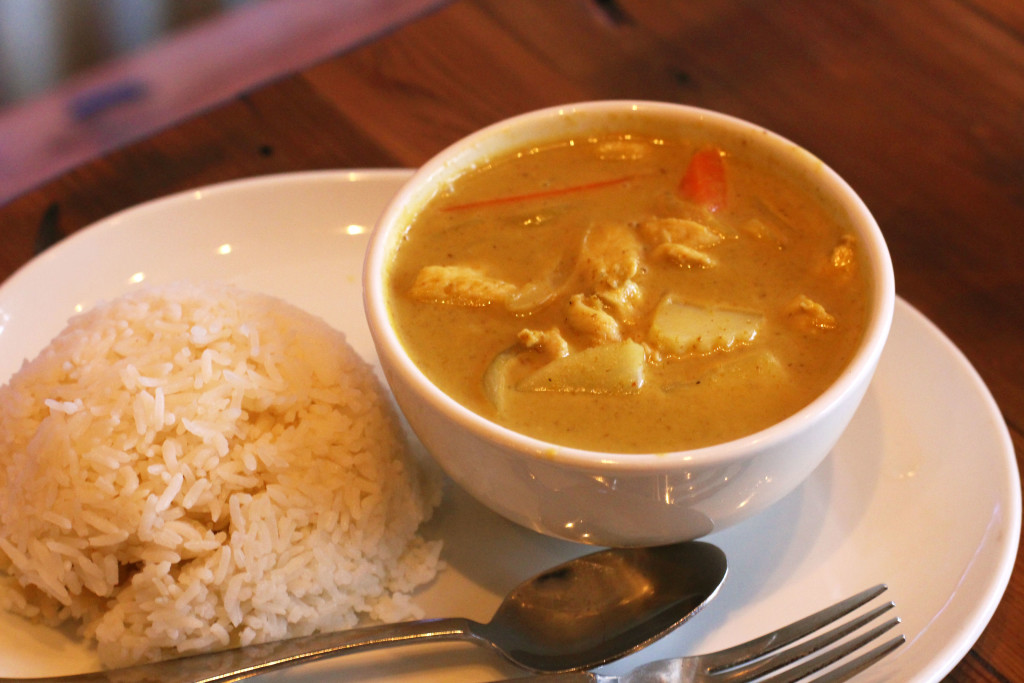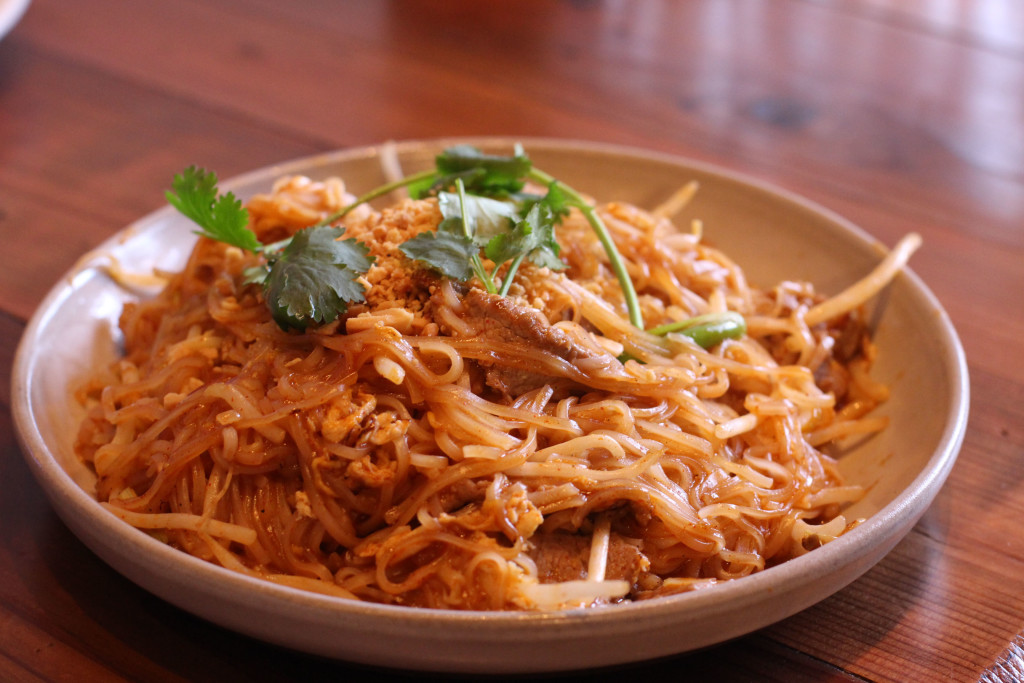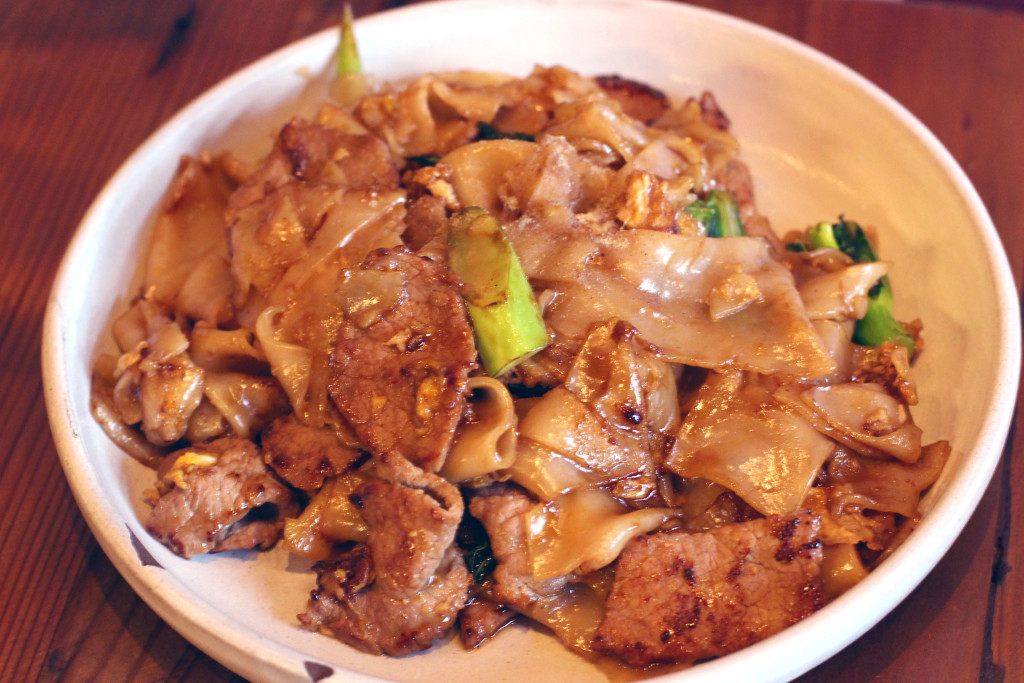We’ve all been there before—taking a seat at a Thai restaurant and opening up the menu to order, only to wonder for the n-th time: What’s the difference again between red and green and yellow curry? To settle these questions once and for all, Spoon ventured to Imm Thai Street Food in Downtown Berkeley.
Green Curry

Photo Courtesy of yelp.com
Green Thai curry is the hottest of the three colors, as it uses fresh green chiles that pack the most spice and turn the curry its signature green color. In addition to heat, usual ingredients, such as sweet Thai basil, palm sugar and extra coconut milk also add distinctive sweetness to this curry that mellows out the spice. In Thailand, it’s paired with beef or chicken, but Spoon also recommends pork to absorb both the sharp heat and subtle sweetness of this green classic.
Red Curry

Photo by Irene Kim
Though it loses the spicy crown to green curry, red Thai curry is the savoriest of the three curries. Dried red chiles provide the signature heat and burnt red hue, while the reduced amount of coconut milk (compared to other colors) allows the deep, bold flavors of chiles, garlic, cumin and coriander to be the main focus. All proteins compliment red curry’s robust spice and salt, but Spoon especially recommends beef because its rich, salty fattiness partners well with this savory curry.
Yellow Curry

Photo by Irene Kim
The least traditionally Thai of the three, yellow Thai curry borrows many delicious elements from classic Indian curries. Turmeric and curry powder, rather than traditional yellow chiles, now give this curry its muted yellow shade and a much subtler heat. The creaminess of coconut milk and herbaceous citrus of lemongrass shine in this rich favorite for the spicy-adverse. Due to this curry’s richness, chicken and fish are Spoon-approved choices to pair with yellow curry as subtly flavored, versatile proteins just waiting to soak up this decadent curry.
Pad Thai

Photo by Irene Kim
A stir fry of noodles, bean sprouts and scrambled egg, Pad Thai has become the classic noodle dish at most Thai restaurants. The distinctive choice of rice noodles in Pad Thai allows this dish’s robust sauce of tamarind water, fish sauce, and red chile pepper, to satisfy every sweet, savory, spicy and sour note your tastebuds might be craving.
Pad See Ew

Photo by Irene Kim
Overshadowed by Pad Thai, Pad See Ew is less popularly known but just as (if not more) flavorful. It’s a similar stir fry of noodles and Chinese broccoli, but soy sauce is now the main component of the sauce, giving Pad See Ew a much bolder Umami punch. The egg noodles bring their own salty notes and heavier texture, and they combine with the dish’s beef to make Pad See Ew the super savory alternative to the more balanced Pad Thai.


